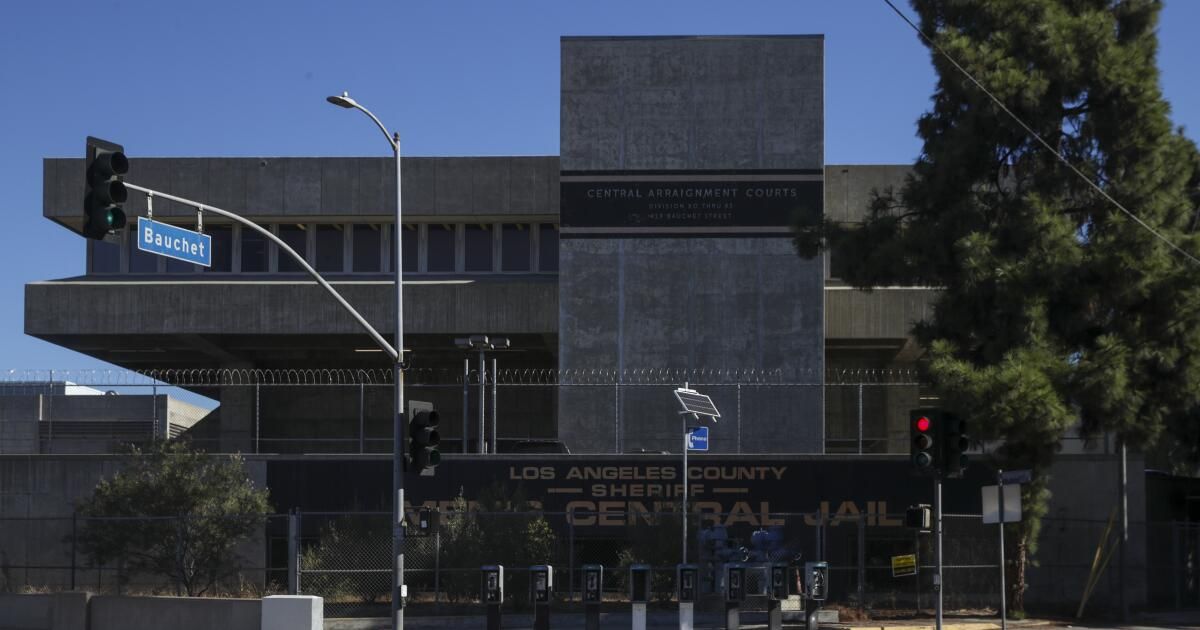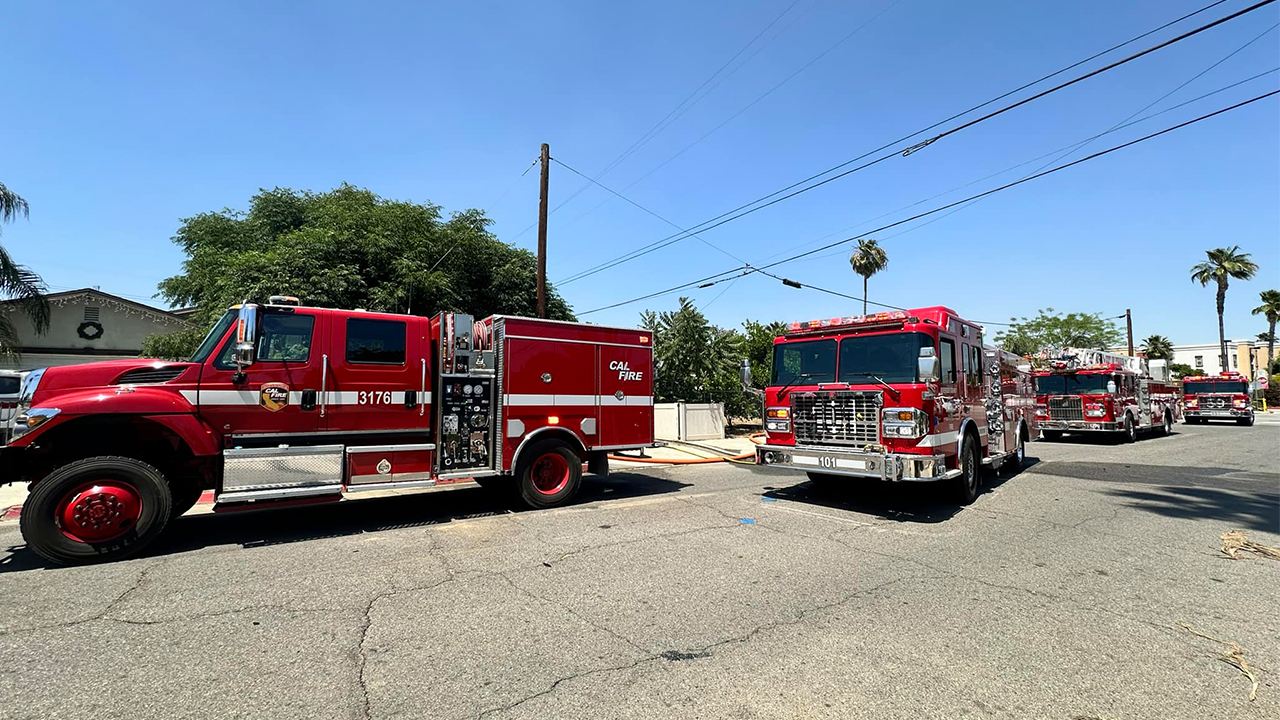The decaying and monstrous central men's prison has raised a staggering array of health and safety concerns in recent years. the fires, The rats, Drugsmold and persistent violence, both From the staff and the inmates.
But a recently renovated engineering study reveals another problem: major structural deficiencies could turn the old building into a death trap in the event of an earthquake.
The 72-page county-commissioned study, completed in 2006, found the jail has weak walls, inadequate reinforcements and concrete so brittle it could crack or break under pressure.
“These types of vulnerabilities would certainly lead to a potential catastrophic collapse,” said Ryan Wilkerson, a structural engineer with the Los Angeles-based firm Nabih Youssef Associates. After reviewing the report, Wilkerson told The Times that a key concern would be a partial collapse of the prison that “certainly” could kill people. Without further study, a complete collapse cannot be ruled out as a possibility, he said.
Like much of downtown, the jail sits atop the Puente Hills reverse fault system, which experts say is capable of producing a powerful 7.5 magnitude earthquake and is one of the most dangerous fault systems in the region. It is the same system that shook the region earlier this month, when a magnitude 4.4 earthquake struck the inside of the prison with enough force.
Fixing the problem would require extensive upgrades that cost $464 million a decade ago, the study said. Between inflation costs and interest payments, the current price tag would likely be much higher. But so far none of the work has been done, and officials said it is not on the agenda.
Last year, when The Times asked county officials for a list of old and at-risk buildings Intended for seismic rehabilitationThe Men's Central Prison was not on the list of 33 problematic structures.
In an emailed statement, the Los Angeles County Sheriff's Department said the jail was not on the list because the county had long planned to close it.
“For many years, the County has expressed a desire to either replace the Men’s Central Jail or close and demolish the facility without replacing it,” the statement said. “Therefore, many of the deferred maintenance needs and costly replacements of the building’s infrastructure have not been funded. Only routine, daily maintenance projects have been implemented to keep the building operational.”
For people who are detained or work in prison — or defend those who do — the report was worrying, if not exactly surprising.
“Conditions at the Men’s Central Jail are appalling for our deputies who work there and for inmates alike,” said Richard Pippin, president of the Los Angeles Deputy Sheriffs Association. “Knowing that the actual structural integrity of the Men’s Central Jail, built 60 years ago, is in question is unfortunately not a surprise.”
The American Civil Liberties Union, which resurfaced the 18-year-old report this month, pointed to seismic risks as further evidence that the facility should be closed.
“It’s easier to ignore the dangers of earthquakes simply because they are so rare,” said Corene Kendrick, deputy director of the ACLU’s National Prison Project. “But this isn’t an abstract concern, it’s a real concern, and the county has simply ignored it, and it’s just further evidence of why the Men’s Central Jail needs to be closed.”
Built in 1963 to relieve overcrowding, the county's largest jail has long been plagued by structural problems and persistent maintenance issues. Supervisory inspectors Inmates regularly report finding flooded cells, broken toilets and cell doors that won't open. Heating and cooling systems are so antiquated that in recent years, at least two inmates have died after showing signs of illness. signs of hypothermia.
There is No smoke detectors or sprinkler systems in the inmate housing areas. And the outdated design of the building and cameras without surveillance leaving blind spots where violence can easily go unnoticed.
For years, county leaders have talked about getting rid of the facility, sometimes replacing it with another jail, sometimes replacing it with a mental health treatment center, and sometimes simply not replacing it at all. After five years of pursuing the latter of those options, this month the Board of Supervisors changed course and We started discussing possible replacements again..
“The pendulum has swung,” Supervisor Holly Mitchell said at a board meeting earlier this month. “We keep saying, when are they going to close Men’s Central Jail? I think there needs to be a question: And what are we building or creating for this population that maybe community, diversion and pretrial settings can’t match?”
The 2006 study grew out of an earlier effort to address the county’s changing jail needs, though at the time the plan was to explore the possibility of adding high-security beds to the existing facility. The Los Angeles County Department of Public Works commissioned GKK Works to complete a feasibility study, and the result revealed a number of seismic faults.
One of the biggest problems has to do with concrete construction.
Non-ductile concrete buildings, such as the Men's Central Jail, were common in the 1950s and 1960s. The structures generally did not have enough steel reinforcing bars to prevent the concrete from bursting out of the building's columns when an earthquake struck. This now well-known flaw was identified after the 1971 Sylmar earthquake.
During that 6.6 magnitude earthquake, two concrete structures at the San Fernando Veterans Administration Hospital collapsed, killing 49 people. Staircases and concrete buildings at the Sylmar hospital campus also collapsed, killing three people.
Subsequently, non-ductile concrete structures were considered so dangerous that their construction was banned.
But the Men's Central Jail was built long before that, and Wilkerson said the feasibility study “describes the building as having all the classic non-ductile concrete issues that we're concerned about,” including a “lack of overall strength.”
Just because the Men’s Central Jail withstood that quake — as well as the subsequent Northridge earthquake in 1994 — doesn’t mean it won’t suffer damage in the future. Both quakes had their epicenters in the San Fernando Valley, and by the time the shaking reached downtown, it was considerably weaker.
In addition to specific concerns, the 2006 report also describes a variety of other “undesirable structural attributes” that it says “could result in significant or severe structural damage in the event of a large earthquake.”
The building's walls and columns are overloaded, meaning they might not be able to support the upper floors. The ground floor, which has some windows, is relatively flimsy compared to the upper floors. And there is what is now known as a design flaw involving overly short columns on the second and third floors, which poses a significant risk.
In addition to the problems identified in the study, The Men's Central Jail, like large areas of the Los Angeles Basin, is located in What is known as a liquefaction zoneLiquefaction occurs when shaking from an earthquake turns the ground into quicksand. This usually happens in places where the soil is made up of loose sand or silt and is filled with groundwater, such as near rivers, like the one a few hundred feet from Men's Central.
Liquefaction can cause structures to tilt or it can lead to a more dramatic phenomenon known as “lateral spread“in which buildings on suddenly fluid ground slide down gentle slopes, as if toward river banks.
There's no mention of those possibilities in the feasibility study, but Wilkerson said that's because it came out before liquefaction zone maps were better understood.
“We now know,” Wilkerson said, “that the river basin in the center has a high water table and a very granular soil type, so there is an area in this central region where liquefaction is a potential.”
When that happens, he explained, buildings can begin to sink “very unevenly”: One section may sink 15 centimeters, while another section may not sink at all. “That’s a type of seismic vulnerability,” he added.
As expected, fixing the problems would be expensive and present a major logistical challenge. The study includes a four-page list of proposed seismic upgrades, such as adding two-foot-thick reinforced concrete shear walls extending from the foundation to the roof, placing support “sleeving” around existing columns, and adding a variety of reinforced concrete beams and flanged buttress walls. For the jail’s infirmary, there are options including adding new steel-reinforced frames.
To achieve any of those goals, the study said, would likely require all or part of the facility to be vacated over several years. And while completing the minimum work needed to achieve a “life-safe” seismic performance level is estimated to have cost about $251 million if it had begun in 2006, the more extensive changes needed to prevent deaths and keep the building habitable in the event of a major earthquake would have cost more than $303 million at the time.
Meanwhile, the building continues to shake.
A former jail employee, who asked not to be identified because of pending litigation, told the Times she was making rounds when an earthquake hit sometime around 2019. She described feeling a jolt before the facility was shut down. And while no one was hurt, the incident served as a reminder of how old and decrepit the facility was. She said her “biggest fear” afterward was that the jail floors would collapse.
A defense attorney, who asked not to be identified because he was not authorized to speak on the record, described being in jail when the 4.4 magnitude earthquake struck the prison earlier this month.
“There was a loud bang and then the interview booths started vibrating really, really loudly and honestly, it sounded like they were going to collapse,” the attorney said.
If that happens, Kendrick, the ACLU attorney, warned that the county could face significant and costly liability in court, especially since county leaders were alerted to the problems nearly two decades ago.
“The legal concept in cases involving prisons and jails is the deliberate indifference and lack of awareness on the part of government officials that there is a substantial risk of serious harm to incarcerated individuals,” he said.
“Something like this is the poster child for a substantial risk of serious harm,” Kendrick continued, “and the county’s failure to act for nearly 20 years is the classic definition of deliberate indifference.”












